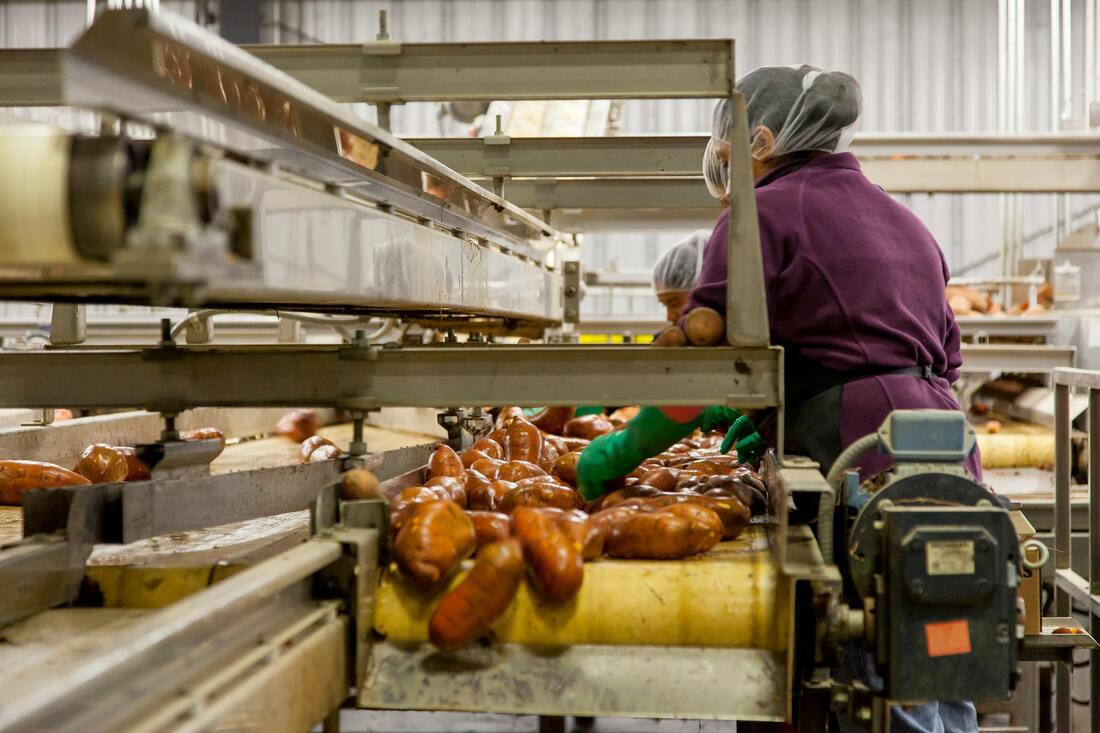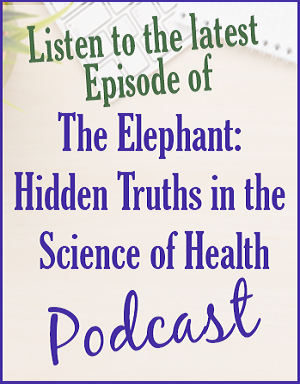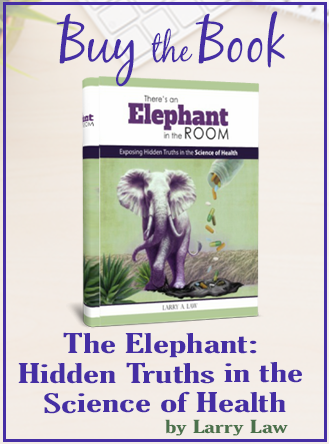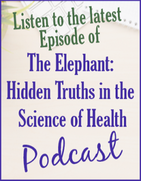Larry A. Law
It's Not You, It's the Food
Chris observes that for the first time in human history, most of our calories come from an entirely novel set of substances called Ultra-Processed Food (UPF). There's a long, formal-sounding scientific definition, but it boils down to this: if it's wrapped in plastic and has at least one ingredient that you wouldn't find in your kitchen, it's UPF. Carlos Monteiro and Kevin Hall are lead researchers in creating this new food classification system called NOVA. NOVA categorizes food into four groups based on the degree of processing. Goup 3 is 'processed food' and Group 4 is 'ultra-processed food.' Groups 1 and 2 are less processed foods and ingredients. Scientists know there are dietary patterns that cause disease and others that don't. Monteiro's genius was to realize he could draw the line between the two patterns based on the level of processing. It isn't far-fetched to propose that food produced for profit might be designed, deliberately or inadvertently, to make us consume it to excess. UPF is specifically engineered to behave like addictive substances, driving us to eat excessive calories. Science has now linked them to the leading cause of early death worldwide. Almost all of our staple foods are ultra-processed. If it is boxed, sacked, or packaged, then it is almost certainly UPF. UPF has become our food culture and is the only available and affordable food for many financially-challenged people. This food has created a pandemic of diet-related disease. The solutions are not found in exerting more willpower, taking personal responsibility, or engaging in more physical exercise. There is an addictive quality driving the pleasure-seeking, sensory feedback loop in the brain. Real food is not addictive. Unfortunately, much like alcohol and drug addiction, UPF is.
A Month-long Test
Reminiscent of Morgan Spurlock's Super Size Me adventure involving a month-long orgy of eating only McDonald's products, Van Tulleken spent a month eating a diet of 80% UPF. He was under the supervision of medical colleagues at University College London (UCL) who documented the significant affects this food had on his physical health. During this period of scientific documentation, he spoke to the world's leading experts from agriculture, the food industry, and academia. Some of those significant insights are outlined below:
Laboratory-created, Synthetic Replacements for Protein, Fats, and Carbohydrates (Real Food)
Our calories increasingly come from modified starches, invert sugars, hydrolyzed protein isolates, and seed oils that have been refined, bleached, deodorized, hydrogenated, and interesterified (fats have been chemically altered to improve their texture). These calories are assembled into concoctions using other molecules our bodies have never been exposed to: synthetic emulsifiers, low-calorie sweeteners, stabilizing gums, humectants (chemicals that attract water), flavor compounds, dyes, color stabilizers, carbonating agents, firming agents, and bulking agents. UPF is now estimated to make up 60% of the average diet in the US and United Kingdom (UK).
Food Processing
When we normally think about food being processed, most of us think about the physical things done to our food—like frying, baking, extruding (pushing "food" into a mold or container), macerating (softening), etc. But ultra-processing includes molecule substitution with altered, synthetic chemicals which mimic healthy proteins, fats, and carbohydrates. These synthetic substitutions are made to stabilize the food and create longer shelf-life, better transportation characteristics (specific temperature and motion qualities), and lower costs. Van Tulleken states, "In addition, the indirect processes include deceptive marketing, bogus court cases, secret lobbying, and fraudulent research which allow the corporations to sell cheap food-like substances as real food."
Why Doesn't Ice Cream Melt?
If you check out the ingredients in ice cream you will find almost all of them contain gums like xantham gum, guar gum, locust bean gum, alginate, carrageenan, in addition to emulsifiers, and glycerine. Xantham gum is a slime that bacteria produce to allow them to cling to surfaces (imagine the accumulated gunk you scrape off your dishwasher filter). Gums, glycerine, and emulsifiers all stop ice crystals from forming by holding water molecules close to them. This allows ice cream to stay creamy as it is transported in bulk from the factory to destinations around the country. It doesn't get crystalline. Delivery vehicles don't have to rush and they don't have to maintain excessively cold temperatures. Some of these "ice creams" actually maintain themselves as a gelatinous foamy mass that resists melting even when not cold. Modified Starch If you extract different starches (sugar in the form of glucose molecules) from various plants, you will find they can exhibit contrasting properties. Mixing modified starches with water can create all kinds of gels and pastes with different textures at different temperatures. These modified starches can replace expensive fats and dairy by creating the exact same properties needed by UPF. They can hold water during freezing and are very effective in thickening sauces. In the 1930s, Kraft used a paste of corn and arrowroot starch to produce mayonnaise without having to use the more expensive eggs and oil while maintaining the same creamy mouth-feel. Van Tulleken explains, "Thin the starch with acid, and it's useful for textiles and laundry. Treat it with propylene oxide, and you get that gloopy feel for salad dressings. Mix it with phosphoric acid and you can improve stability through multiple cycles of freezing and thawing—perfect for pie fillings. And maltodextrins (short glucose polymers—a form of modified starch) can do things like giving a surface sheen and creaminess to what people think is a 'milkshake'. No more need for expensive dairy fats: these starches come from crops that can be grown at vast scales and at a fraction of the cost."
Partially Hydrogenated Oil, Cottonseeds, and Natural Flavors
If you heat oil in the presence of hydrogen gas at high pressure, you can modify its chemical structure and change its melting properties. If you hydrogenate the oil fully, you get fat that's hard as ice. But if you only partially hydrogenate, you can create any melting profile you like. This makes it possible to produce a fat that's solid at room temperature, but still easy to spread when you take it out of the fridge—margarine! One unfortunate side-effect is that the process creates trans fats which have been linked now to heart disease and other serious health problems. Cottonseeds were a worthless byproduct of the cotton industry. But by 1907, the Proctor and Gamble company figured out a way to turn cottonseed oil into solid edible fat. One difficulty they faced was removing a toxin called gossypol which, along with other impurities, made the oil taste foul. The solution they developed was to refine, bleach, and deodorize (RBD) the oil. This has become a standard-food processing technique in the food industry. Palm oil is a luminous crimson color. It is highly aromatic, spicy and flavorful. It is full of healthy antioxidants like palm tocotrienols. But UPF manufacturers consider all that flavor and color a problem. You can't make Nutella with spicy red oil! Oil for UPF needs to be bland, plain, and flavorless so that it can be used to make any edible product. RBD is the solution. Manufacturers refine the oil by heating, use phosphoric acid to remove any gums and waxes, neutralize it with caustic soda, bleach it with a bentonite clay, and finally deodorize it using high-pressure steam. This process is used to make soybean oil, palm oil, canola (rapeseed) oil, and sunflower oil. These four oils make up 90 percent of the global market. In the 1920s, Proctor and Gamble began a large campaign marketing detoxified oil as Crisco, an acronym for crystallized cottonseed oil. Crisco shortening, essentially a fake lard, was possibly the first mass-produced UPF. I can still remember the can sitting prominently in our kitchen. Natural flavors are actually not so natural. They are synthetic chemicals that create the same taste as a natural lemon, orange, or other fruit taste. There is nothing natural about their chemical construction and constitution! They are not the real fruit. If you see "natural flavors" on the ingredient list, you can be sure they used these flavors to cover up what would have been a dull, clay-like mass of barely edible food-like substances. They are the same thing as "artificial flavors," but the marketing sounds a lot better if they call it natural flavors.
Disease Cost
UPF damages the human body and increases rates of cancer, cardiovascular disease, metabolic disease and mental illness. It damages human societies by displacing food cultures based on real food, drives malnutrition, obesity, and early death. A 2022 study showed that increasing the intake of UPF by 10 percent is associated with a 25 percent increase in the risk of dementia and a 14 percent increase in the risk of Alzheimer's disease. A UK study involving 60,000 patients found the risk of all-cause mortality was increased by 22 percent. A Spanish study found the risk to rise by 62 percent. Because processing is not factored into our national guidelines, it's perfectly possible for someone to eat a high-UPF diet that is actually low in fat, salt, and sugar. Such a person's diet would be "healthy" according to the guidelines, but according to UPF evidence it would likely cause serious health problems. Reducing fat and sugar hasn't solved the obesity and chronic disease problems. A growing weight of evidence suggests that some specific ingredients routinely used to manufacture UPF may be harmful, and that some of the peculiar characteristics of UPF (like its softness and its energy density) are associated with weight gain and ill health. But that conclusion is not something the food industry wants the public to understand. Just like the pharmaceutical industry or the tobacco industry, when the food industry funds "science," it biases the results in favor of the industry. Researcher Kevin Hall believes UPF somehow resets the internal hunger thermostat, or bypasses it, or perhaps just breaks it completely. UPF is not simply so delicious that it creates "hedonic overdrive," where we enjoy eating more than we hate being full. Instead, it's that the new UPF food environment is affecting our ability to self-regulate. We can't stop eating. Something in the food, or in the signals in the blood or in the brain, is in conflict with another area. Frequently the physical and nutritional fullness doesn't seem adequate to override the circuitry of desire. It's not just the food itself, but the external cues to eat—the advertisements, price, packaging, and smells. They all have a significant effect on our brains and bodies that scientists are only just beginning to understand. Eating is far less of a choice than it appears—this fake food has an addictive quality to it that real food never exhibits.
UPF is Killing Us
Labeling UPF as addictive will probably never happen, but it is the truth. From Van Tulleken's book: 1. "UPF is consistently associated with higher scores on food addiction scales compared to real food. It's always UPF that people report problems with. Not all UPF obviously—for some people it will be donuts, for others ice cream. But when it comes to loss of control of eating and binges, UPF products are almost always the substances used." 2. "UPF seems to be more addictive for more people that many addictive drugs...the transition from trying UPF to being unable to stop using it is extremely high: 40 percent of the US population live with obesity and we know the majority of them will try to lose weight in a given year. Cessation rates are so low as to be non-existent...90% of people in the US consume alcohol but only 14% develop an alcohol-use disorder. Even with illicit drugs like cocaine, only a relatively small subset of users (20%) go on to become addicted." 3. "Drugs of abuse and UPF share certain biological properties. Both are modified from natural states so that there is rapid delivery of the rewarding substance. The speed of delivery is strongly linked to addictive potential—cigarettes, snorted cocaine, shots of alcohol. Slowing down delivery transforms the effects—methamphetamine for example becomes a treatment for children who can't concentrate. Nicotine patches are far less addictive than cigarettes...softness and speed of consumption are defining characteristics of UPF compared with real food." 4. "Drug addiction and food addiction share risk factors like family history of addiction, trauma and depression, indicating that UPF may be performing the same function as the drugs in those people." 5. "People report similar addiction symptoms with UPF and other addictive substances, including craving, repeated unsuccessful attempts to cut down and continued use despite negative consequences. And those negative consequences are severe: a poor diet may have worse effects for many people than even very heavy smoking." Just imagine the consequences for heavy smokers who do eat UPF! 6. "Neuroimaging has shown similar patterns of dysfunction in reward pathways for both food addiction and substance abuse. These foods also appear to engage brain regions related to reward and motivation in a similar manner to addictive drugs." "You might find it hard to consider UPF as equivalent to cigarettes, but poor diet—a high UPF diet—is linked to more deaths globally than tobacco, high blood pressure or any other health risk—22 percent of all deaths." The good news is that while it's impossible to quit food, it's possible to quit UPF. It's not easy, but when people know how serious it is, they can find the motivation to eat real, whole food.
Exercise
One last note on exercise and it is highly significant. We cannot lose weight just by increasing activity. Van Tulleken states, "The evidence is clear that we are eating more calories than ever and that trying to change our energy expenditure is not going to make a significant difference to weight. Obesity is caused by increased food intake, not inactivity." Ultra-processed food and drink is the reason we are obese. Until one eliminates UPF, weight will not fall. Eliminate UPF and the excessive weight dissolves and disappears without any other effort. Study after study (except those sponsored and funded by Coca-Cola and the soda industry) clearly demonstrate that increasing exercise does not impact weight loss significantly. It turns out that, if we are active, our bodies compensate by using less energy on other things, so that our overall energy expenditure stays the same. Exercise can lead to improved physical health, but it doesn't lead to weight loss. Our bodies live in a fixed energy model. Data from Pontzer, published in Current Biology in 2016, shows that we burn on average 2,500 calories per day (between 2,100 and 2,800) whether at desk jobs or walking long distances. If we don't spend the energy on walking, the body will spend it elsewhere—on things like being stressed. When people who exercise a lot rest, their bodies really rest. They reduce energy expenditures associated with routine non-essential body functions to conserve remaining energy. And this downtime is not bad, because a bit of downtime actually helps to restore immune function, endocrine, reproductive, and stress systems within the body. Thus, exercise helps your body to become healthier, but not lose significant weight.
Conclusion
This book is really a must-read. I have only touched on a few points—the author has a great story on Pringles potato chips being less than 40 percent potato. I was addicted to those chips for a long time, but I won't be eating them any time soon! Rather than being overwhelmed with all this information, Chris shared that when he looks at ingredient labels he focuses on one thing: flavoring. If natural or artificial flavoring is listed, he avoids it like the plague. I think that is a good place to start. As we make small steps, we can gain confidence in how our bodies feel and choose to eliminate more and more UPF ingredients. "By small and simple means are great things brought to pass."
0 Comments
Leave a Reply. |
BlogArchives
July 2024
Categories
All
|
© Angie's Option GRM. All rights reserved.








 RSS Feed
RSS Feed

